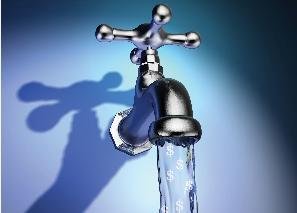Demand Response is often discussed in the electrical power generation community; recently, though, it is being discussed in the water and wastewater industries, as well. Early indications are that demand response can allow water utilities to save significant operating costs – mainly via energy cost reductions. With the cost of pumping and supplying water expected to rise by 50% over the next 40 years, water utilities are eager to reduce operating costs where possible.
Demand Response, or DR, is a method of incentivizing customers to reduce or curtail power usage during peak times. It is widely used with industrial customers in the developed world and is being pushed out to the general public in many key markets. If one examines a typical power demand curve, there are peaks where usage is high and troughs where demand is low. The electrical power companies and the electric grid, itself, must cope with both conditions. If the overall usage was a flat line through the course of the day, these issues would be simplified. The power company would simply build enough plants for the average demand and operate them 100% of the time. The actual usage of electricity, however, throws this simple model out the window and requires power companies to “balance†their production of electricity with the usage patterns of their customers. The power companies must anticipate what the peak loads will be and plan accordingly, shutting down or diverting power from those plants when the demand is not there.
Rather than build more power plants simply to keep pace with peak demand, DR encourages customers to shift that demand to a different time of the day when overall demand is lower. The energy used is exactly the same, but by pushing the power usage to a different time, the power companies move closer to the flat-line demand curve discussed above. This change in behavior results in lower capital costs for the utilities and lower electricity costs for the consumer.
DR actually encourages this shift in usage by increasing the cost of electricity during peak times and reducing it during off-peak times. Businesses and consumers with smart meters can view these rates in real time and make decisions accordingly. Typically, the higher peak rates occur during the midday hours and follow a fairly predictable pattern. Electricity consumers can take advantage of this pattern and adjust their habits accordingly; saving themselves money and reducing peak load for the utilities.
Enter the water utilities. From pumping the water to disinfecting and purifying it, water supply requires significant amounts of electrical power. Many water utilities have a luxury, though; they can pump water into reservoirs when needed. By using the reservoir as part of a DR system, water utilities can take great advantage of low-rate times of the day. In the extreme implementation of DR, the water utilities can incentivize customers to water lawns later in the day when electrical rates are lower. This final vision of “integrated demand response†has been discussed, but has not been implemented to date.
Many utilities are taking advantage of the cost reduction opportunities associated with the current implementations of DR. Large utilities such as the Florida Keys Aqueduct System and the City of Glendale (CA) as well as smaller utilities like the Berrenda Mesa Water District. Berrenda Mesa partnered with CPower and Pacific Gas and Electric in 2007 to take part in their demand response program. Though Berrenda Mesa is a relatively small water utility, its monthly electric bills exceeded $500,000. Through the Pacific Gas and Electric DR program, Berrenda Mesa has been able to reduce costs while still meeting their water district demand.
Demand Response is likely here to stay. With rising electric costs and no shortage of needs, it is likely that more and more of the world will be converted to “smart grid†technologies that allow both businesses and consumers to make informed decisions relative to their use of electrical power. It seems logical that water utilities should investigate and take advantage of DR programs as they become available in their areas.
Do you manage a water utility and want more information about Demand Response? Send an email to us at contact@h2bid.com. Demand Response can be ideally suited for your utility to save money. Ask us about how your water utility can save even more money by forcing electricity companies to compete for your Demand Response business.

